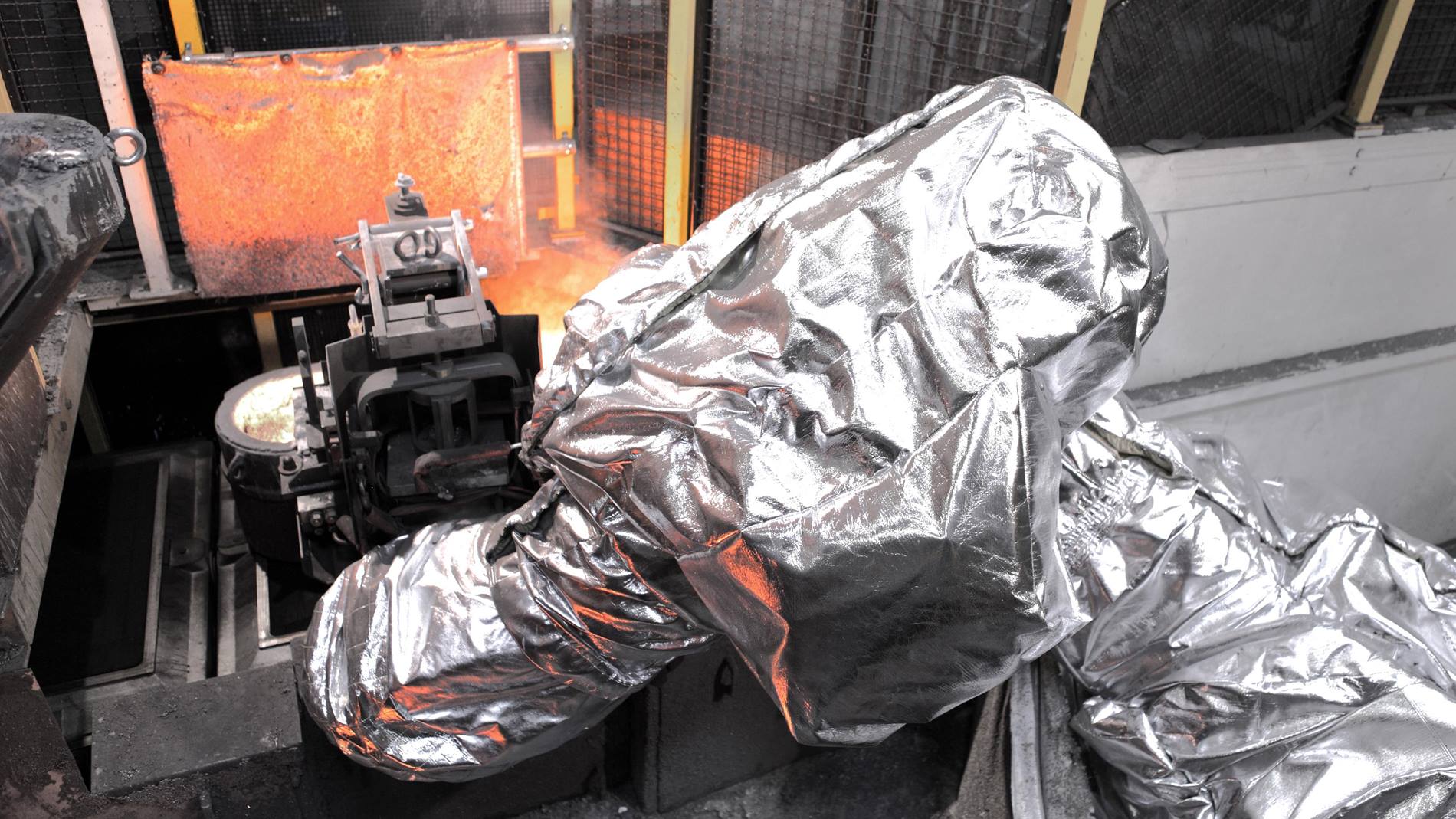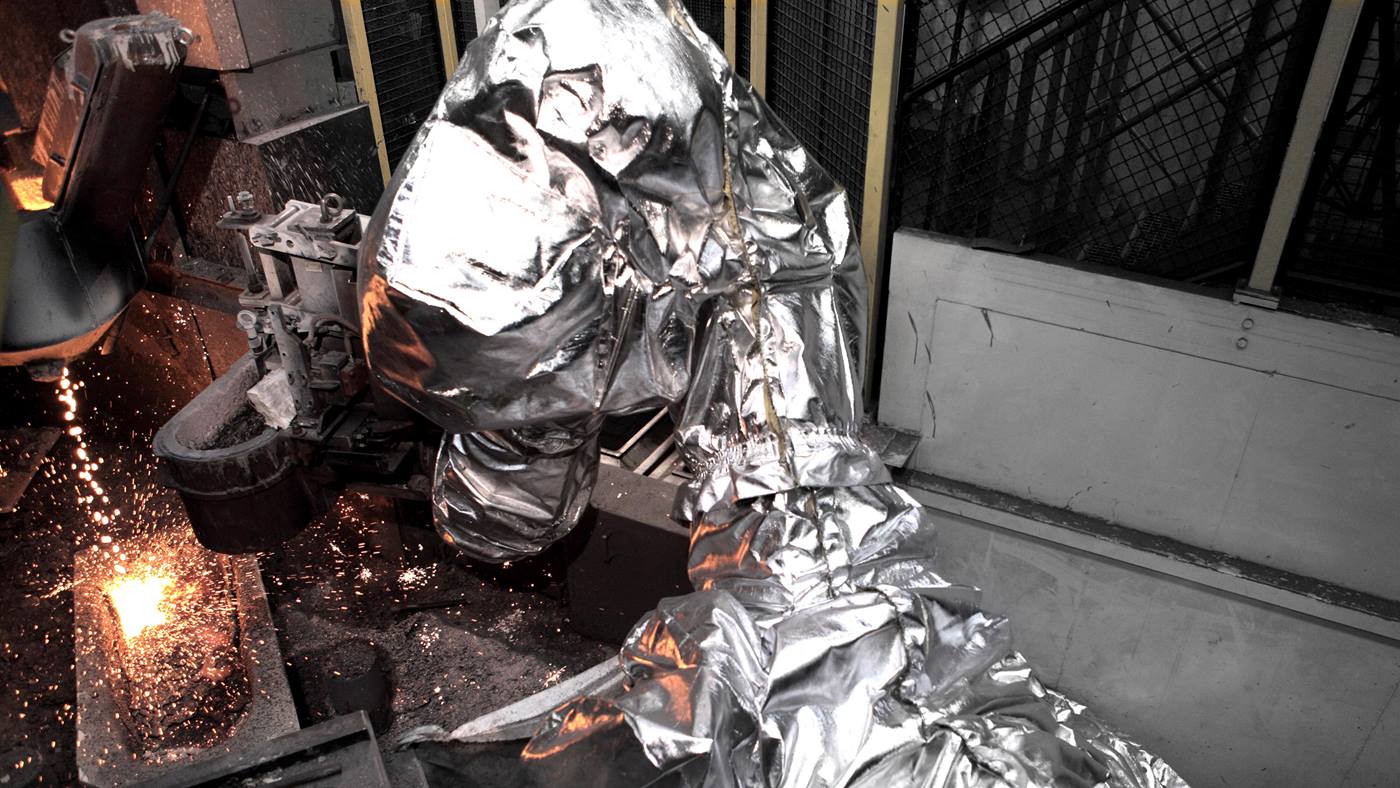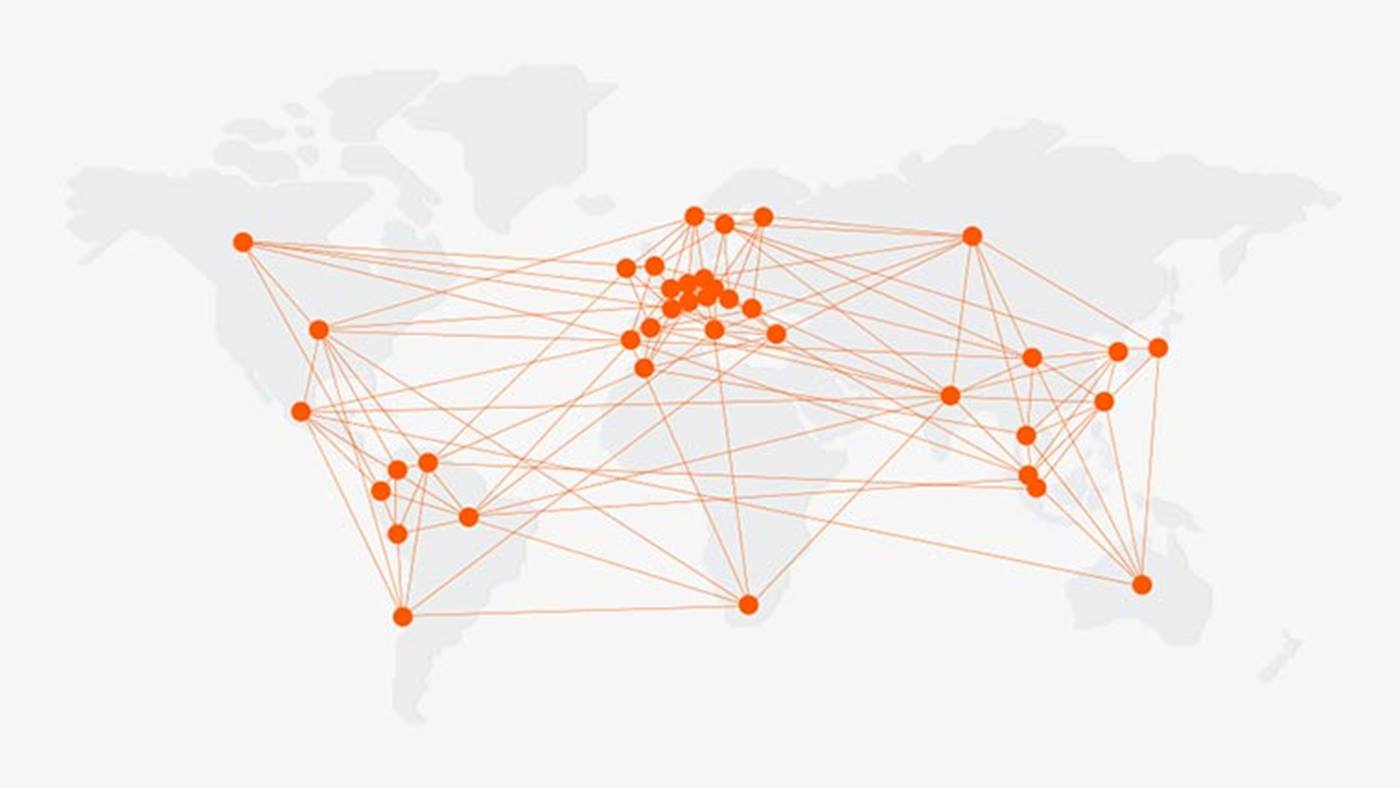Georg Fischer AG was established in 1802 and its Mettmann plant has a history stretching back more than 100 years. Georg Fischer Mettmann forms part of the GF Automotive division of Georg Fischer AG with its headquarters in Schaffhausen/Switzerland. In addition to cast products, Georg Fischer AG manufactures machine tools and piping systems. The Mettmann location employs about 1,000 people, and produces 190,000 metric tons of castings for the automotive industry every year.
Automation solution for casting of molten iron
Last year, a completely new foundry came on stream at Mettmann for producing axle and engine components for cars and trucks. Georg Fischer AG was looking for a technical solution for pouring the extremely hot and molten iron into the molding boxes at any point, thereby achieving the greatest possible flexibility and exploiting the molding boxes to the full. As a rule, this task is carried out by systems that can only fill a sand mold at a single point. Since pouring is stationary at a fixed pouring position, flexible casting is not possible in these systems.
Two KUKA KR 1000 titan robots work in parallel
By using two KUKA KR 1000 titan heavy-duty robots for casting the molten iron, Georg Fischer has achieved flexibility and is able to exploit the mold area to optimum effect. Now, the pouring system no longer dictates where the castings are allowed to be, and where not. Two KR 1000 titan robots work in parallel in the solution developed by the integrator ROBOTEC Engineering GmbH. A heat-resistant suit additionally protects the robot against the extremely hot conditions within the foundry.
Mounted on the robot flange is a casting ladle that is filled with molten iron at 1400 degrees Celsius. A load cell is additionally installed between the casting ladle and the robot flange, as a means of weighing the quantity of molten iron. This means it is possible to add the precise amount of iron that is required to make up the correct quantity in the next casting cycle. The casting ladle only ever contains the optimum quantity of molten iron. The flexibility of the six-axis robots means the iron can be poured into the molding box at any point.
The sand molds cool down to below 700 degrees Celsius before the castings can be taken out. Following further cooling to room temperature, the parts are blasted and subjected to a visual inspection before they are released for shipment. If there are malfunctions or lengthy downtimes, the metal would cool down in the casting ladle and could not be used for the casting process any longer.
ROBOTEC has developed an innovative solution for this situation: The two robots are able to return process iron to the casting furnace in which the iron is heated back to the casting temperature. Another innovation is the fully automatic casting ladle change – the robot can put down the used casting ladle and pick up a new one, just like a robot gripper change. Using the KUKA robots also enables various setup work.
Compact, powerful, precise and easily integrable
The KUKA KR 1000 titan F offers a highly compact design and comparatively low weight of 4,700 kg. In addition, it can be integrated into complete systems without requiring expensive special foundations and can withstand very high payloads of about 950 kg. It is not only able to lift exceptionally heavy loads, but also to position them with utmost precision. It is also able to bridge distances of up to 6.5 meters with ease. Its strength lies in its compact design, which optimally utilizes the workspace and allowed space-saving and cost-efficient integration into the system.
Compact, powerful, precise and easily integrable
The KUKA KR 1000 titan F offers a highly compact design and comparatively low weight of 4,700 kg. In addition, it can be integrated into complete systems without requiring expensive special foundations and can withstand very high payloads of about 950 kg. It is not only able to lift exceptionally heavy loads, but also to position them with utmost precision. It is also able to bridge distances of up to 6.5 meters with ease. Its strength lies in its compact design, which optimally utilizes the workspace and allowed space-saving and cost-efficient integration into the system.



